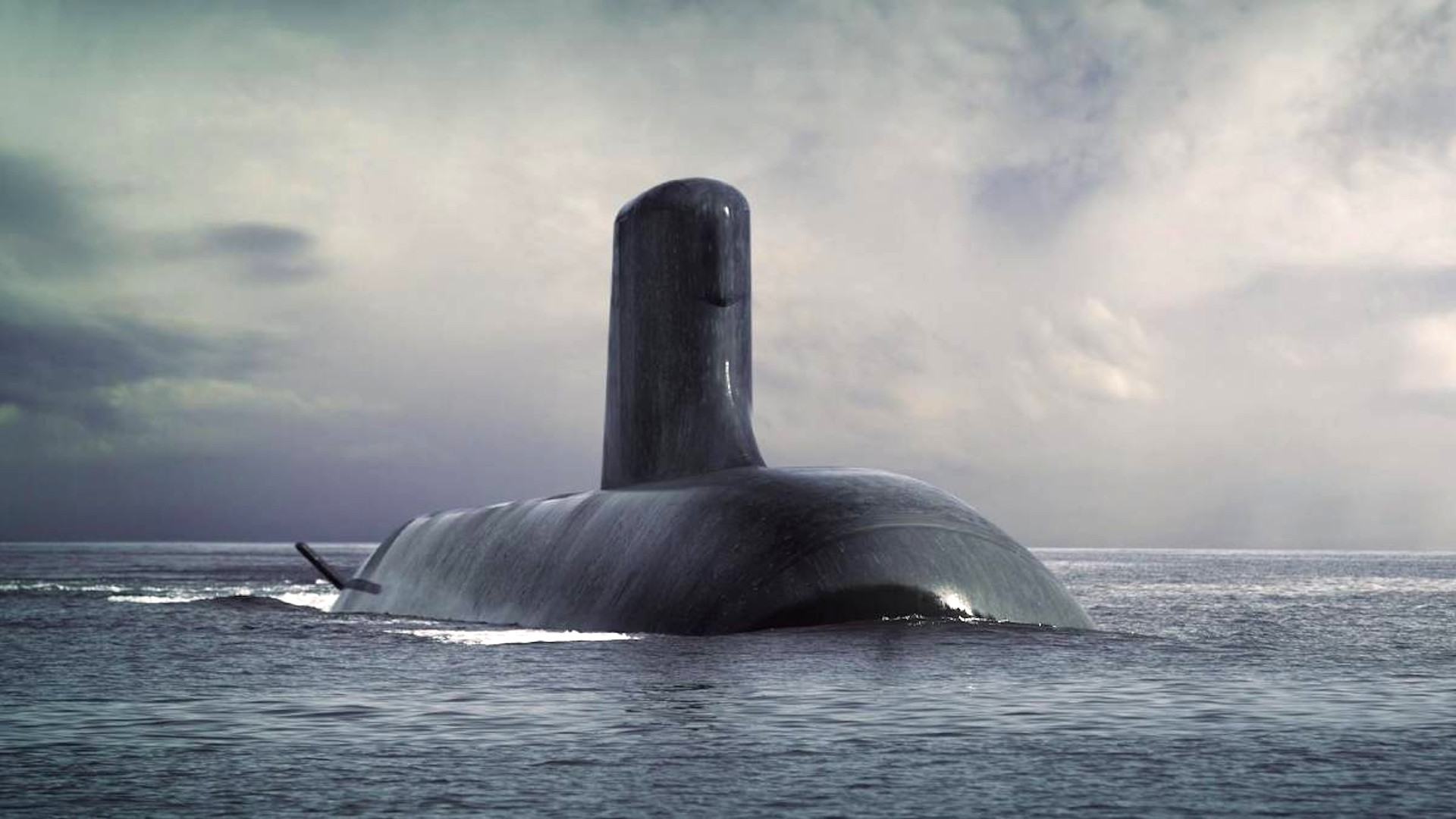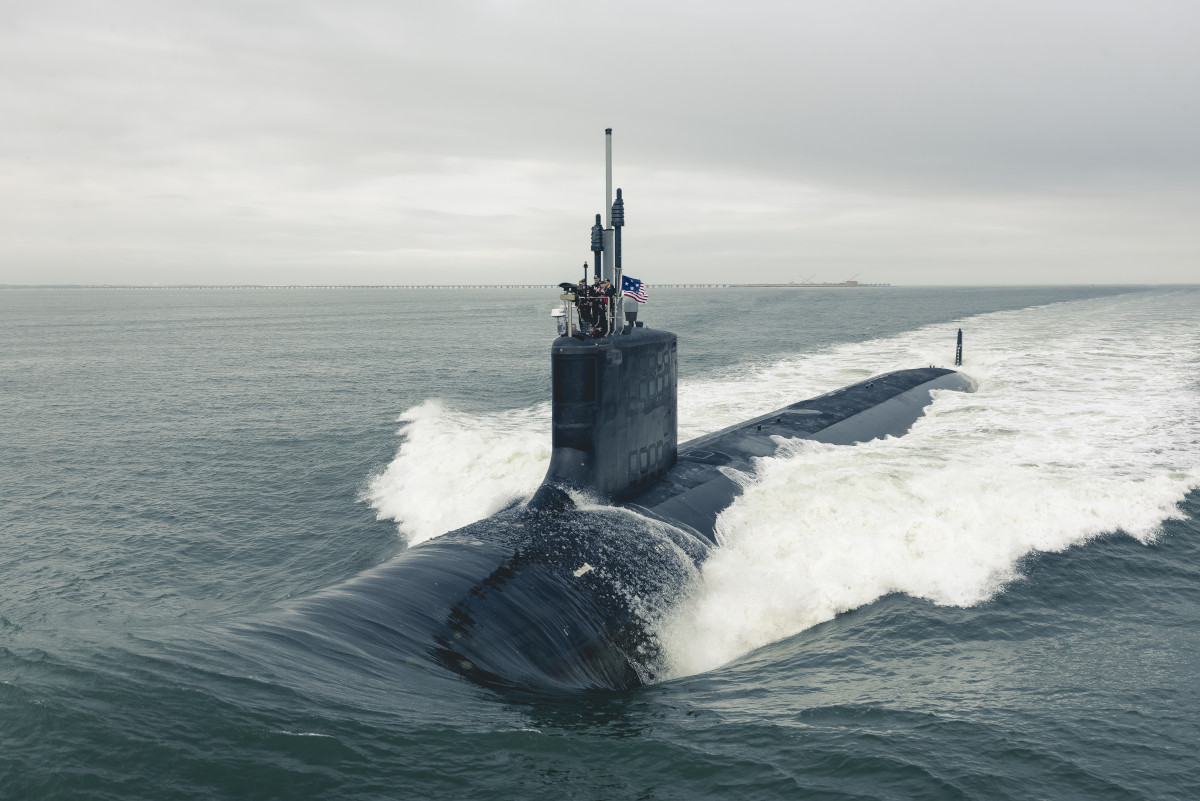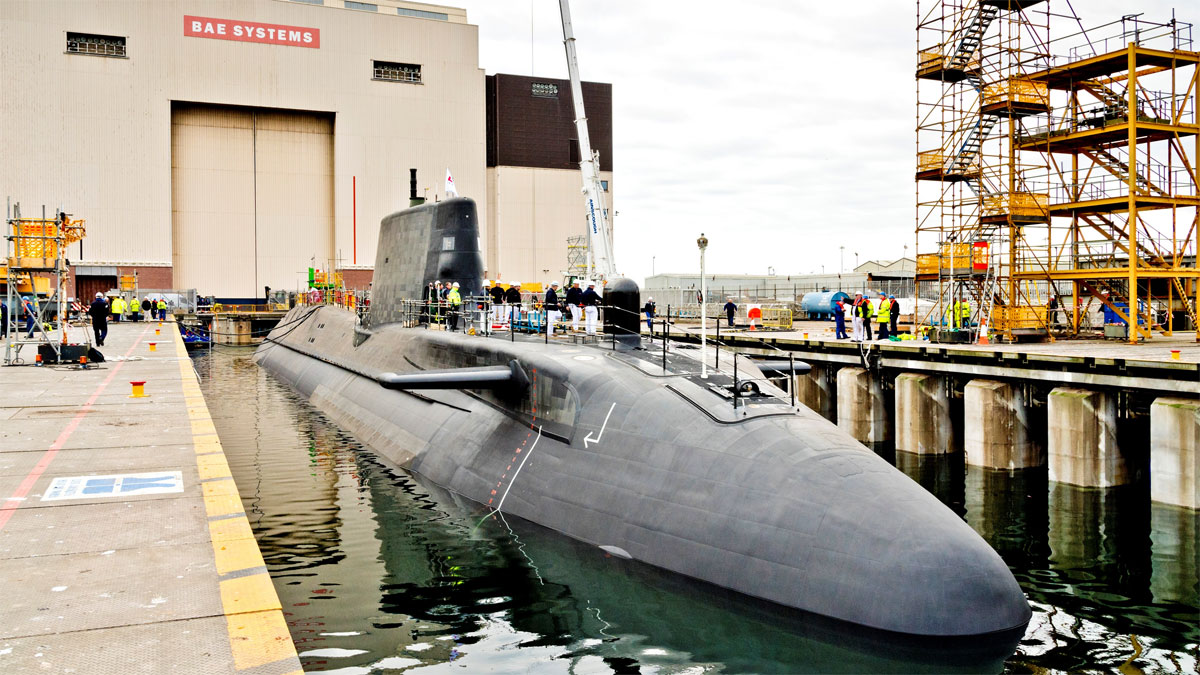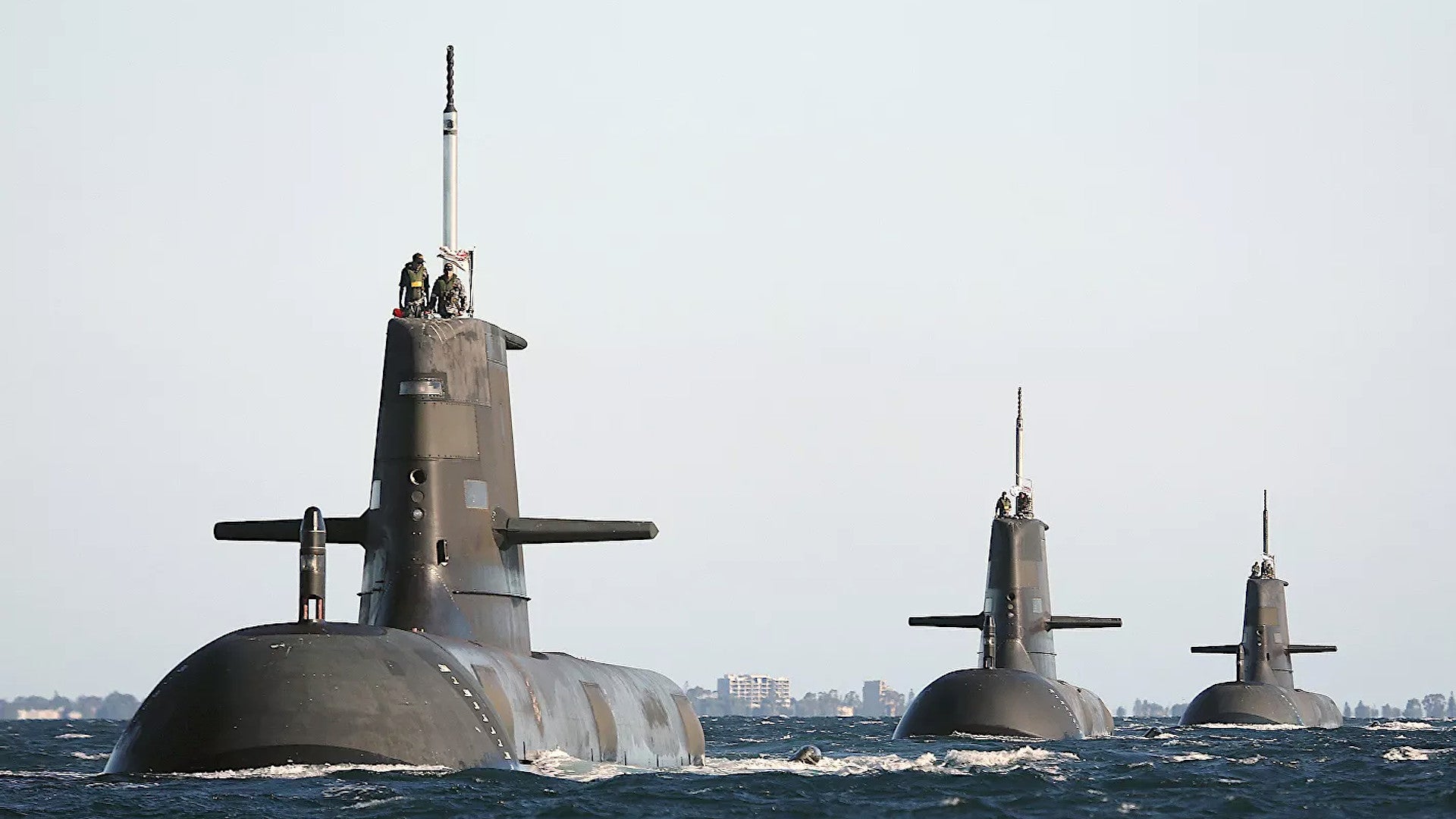The Royal Australian Navy is set to get a fleet of nuclear-powered submarines as part of a new trilateral advanced defense agreement with the United States and the United Kingdom. The Australian government is also reportedly poised to cancel its long-troubled deal with French shipbuilder Naval Group to build advanced conventionally-powered attack submarines for the Royal Australian Navy as a result.
Australian Prime Minister Scott Morrison, who was joined remotely by U.S. President Joe Biden and U.K. Prime Minister Boris Johnson, made the announcement on Sept. 15, 2021. Morrison said that the plan, which will be refined over the next 18 months, is to build an unspecified number of nuclear-powered submarines in the Australian city of Adelaide in close cooperation with the United States and the United Kingdom.

This effort is just one part of a new partnership between the three countries, dubbed AUKUS, which is short for Australia-United Kingdom-United States, that also includes cooperation in other areas, including long-range strike capabilities, cyber warfare, artificial intelligence, and quantum computing. President Biden said AUKUS would help all three countries work more closely together to help ensure peace and stability in the Indo-Pacific region in the long-term.

Australia had previously considered acquiring a nuclear-powered submarine type to replace its aging Collins class diesel-electric boats, before deciding to pursue an advanced conventionally-powered design instead. In 2016, Naval Group, then known as DCNS, won the competition to supply the Collin class replacement with its Shortfin Barracuda Block 1A, which was derived from the company’s nuclear-powered Barracuda design that it developed for the French Navy.
Since then, cost increases, delays, and other issues have dogged work on these submarines, the first of which the Royal Australian Navy announced would be named HMAS Attack in 2018. Under this existing deal, the first Attack class boats have not been expected to enter service until sometime in the early 2030s. The total cost of the program, which includes the production of 12 submarines, has also risen from $40 billion to nearly $70 billion. At the same time, the French government has continued to insist that its own effort to acquire six nuclear-powered Barracudas will only cost just over $10 billion, something that has only raised further questions about the state of the Australian contract with Naval Group.
In June, Australia’s defense ministry announced plans to upgrade its existing Collins class submarines due to the issues with the Attack class. In January, there were reports that Australian authorities had also begun exploring alternative replacement options to the French-designed submarines. It would seem clear that the Attack class contract will now be scrapped in favor of these new nuclear-powered submarines.

A nuclear-powered submarine, potentially one with land-attack strike capabilities, would significantly boost the Royal Australian Navy’s ability to conduct various kinds of undersea warfare operations in the future. While advanced conventional designs, such as the Shortfin Barracuda with its air-independent propulsion system, offer some similar performance aspects to nuclear propulsion, they cannot match the effectively unlimited range that nuclear propulsion provides. Nuclear-powered boats are faster and capable of staying submerged for time spans only limited to onboard provisions and maintenance demands, too. Even the most advanced AIP boat, such as ones that use fuel cell technology, still have to surface from time to time, including to refuel. This can be measured in weeks or less depending on how much energy is required during dive operations.
All of this would be extremely beneficial for conducting patrols across the vast expanses of the Pacific, and for helping the boats get to their patrol locations faster. For instance, a 2013 report from the Center for Strategic and Budgetary Assessments, a U.S. think tank, indicated that nuclear-powered submarines operating from Perth could stay on station in the highly strategic South China Sea for up to 77 days, while advanced conventional submarines would only be able to manage patrol lasting around 11 days.
These capabilities also mean nuclear-powered boats are even better able to perform roles where modern submarines, in general, already excel, including being highly survivable anti-ship and anti-submarine warfare, special operations, long-range strike, and intelligence gathering platforms. The Attack class submarines were expected to be armed with a mixture of heavyweight torpedoes and Harpoon anti-ship cruise missiles, as well as being able to deploy naval mines. There had also been discussions about potentially adding a land-attack capability of some kind.
So far, there have been no specific details about what a future Royal Australian Navy nuclear-powered submarine might look like. However, the Australian Financial Review newspaper did report that the United Kingdom could be directly involved in helping Australia to establish a domestic capability to build suitable nuclear reactors and that U.S. Navy might begin operating multi-purpose Virginia class boats from the HMAS Stirling naval base in Perth in the interim.
Establishing the infrastructure and procedures necessary to support the Virginias would help pave the way for Australia’s own nuclear submarine force. It could also provide added opportunities for Royal Australian Navy personnel to conduct exchanges to gain more insight into operating boats with nuclear propulsion.
It is also worth noting that the Virginia class is a nuclear-powered design in-production in the United States that could present a highly attractive off-the-shelf option for meeting Australia’s requirements. Astute class nuclear-powered submarines are also in production in the United Kingdom. Either type could also provide a starting place for a new type specifically for Australia, though using an existing design would help drive down procurement and sustainment costs for all parties involved.

Regardless, an Australian nuclear-powered submarine force is well in line with AUKUS’ overall emphasis on helping Australia, together with the United States and the United Kingdom, project power to an even greater degree in the Indo-Pacific, something that can only help challenge China’s increasing naval and other military capabilities. The Chinese government has ever-more-steadily employed its growing military prowess, as well as paramilitary forces, to assert its expansive and widely disputed territorial claims in the Pacific region, especially in the South China Sea.
Growing Chinese military capabilities, as well as other tensions between Canberra and Beijing, have already been driving an increase in Australian defense spending, in general. This is a geopolitical reality this is significantly different from how things were when Naval Group was chosen to supply the country’s next submarines. The People’s Liberation Army’s (PLA) anti-submarine warfare capabilities have also continued to improve in the intervening years.
At the same time, while the practical benefits of Australia pursuing a nuclear-powered submarine might be clear, doing so can only have a number of political ramifications for the country, both internationally and domestically. Most importantly, historically, nuclear reactors for submarines, due to their need to be compact, but powerful, have often been fueled by weapons-grade highly enriched uranium (HEU). To date, there is no country that fields nuclear-powered submarines that does not also have nuclear weapons.
Australia ratified the Nuclear Non-Proliferation Treaty (NPT), which includes a pledge by non-nuclear weapon states not to develop such a capability in any way, in 1973. The country also has a prohibition on building nuclear power plants in place. Australian Prime Minister Morrison insisted that the nuclear submarine plan would not violate the civil nuclear power prohibition and stressed that the country has no intention of acquiring nuclear weapons. Separately, Prime Minister Boris Johnson said that the plan was fully in line with each country’s NPT obligations.

Still, the infrastructure necessary for the local production, or just sustainment, of nuclear reactors for Royal Australian Navy submarines would undoubtedly cause significant debate about whether the country is meeting its obligations under the NPT or its own laws. It will almost certainly also prompt criticism from domestic groups, as well as foreign opponents, such as China.
No matter what, the AUKUS announcement today makes clear that the current government in Australia, with the support of its allies, strongly feels that its national security needs now demand this kind of capability.
You can find additional coverage of Australia’s new nuclear submarine plans and other elements of the AUKUS initiative in our follow-up piece here.
Contact the author: joe@thedrive.com

